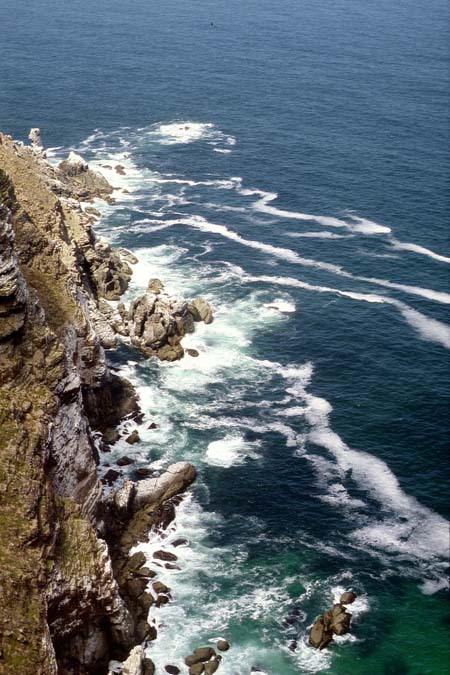South Atlantic

Madeira (WS)

Columbus monument, Buenos Aires (WS)
|

Rabat, Morocco (WS)
|
Ptolemaeus of ancient Egypt recognized the earth being a globe and calculated its circumference almost exactly. With the new spirit of Enlightenment, science and exploration gained much on importance. It was Prince Henry the Navigator (1394-1450) who, although never gone to sea, did everything within his power to promote shipbuilding and navigation, thus making Portugal the leading nation of the age of discoveries. He let develop a handy new vessel, the caravel, especially qualified for expeditions. In the year 1487, Bartholomeo Diaz was sent out with three vessels to explore the coast of Africa down to the Cape where he was forced to return by his crews. The Cape of Africa was thereafter given the name of "Good Hope". His great fellow-navigator Vasco da Gama reached Calicut (India) in 1497/98. Two years later Diaz was appointed commander of a ship of Cabral's expedition with the same destination. Despite the hopeful name the Cape had been given, he suffered shipwreck there and lost his life. After da Gama's return, the above mentioned Pedro Alvarez Cabral was commissioned in 1500 to lead a second expedition to the mysterious Calicut (India). Setting out in western direction, he hit probably by coincidence on land and thus becoming the first to set foot on South American soil, of which he took possession in the name of the Portuguese crown. From there he crossed the South Atlantic for Calicut where he established merchant bases for his country. Getting involved in conflicts with native tribes he lost 11 of his 15 ships.

Gambia fishermen (WS)

Cape Town, old harbour (WS)
 Cape of Good Hope (WS)
Cape of Good Hope (WS)
Around 1500 Amerigo Vespucci sailed from Lisbon down the east coast of South America and explored the Amazon Delta and the Rio de la Plata. Thanks to his feat of merit, both American continents were named after him by contemporary geographers. Fernao de Magalhaes (Magellan) reached the Pacific after having passed the stormy strait on the southern point of the continent on his great voyage round the globe from 1519 to 1521. In the 16th century Spanish Conquistadores forced their way into the country in quest for gold and other treasures and subdued the native population pretending to salvage their souls for God. Instead, the Spaniards forced the "pagans" to work hard for them in silver mines and on plantations, whereby many died and an uncounted number were killed by their oppressors. Despite of an interdict issued by Emperor Karl V, slavery kept on with the only difference that native labour force was replaced by black slaves carried about from Africa. The conditions on the transport were horribly inhuman and many of the chained men, women and children suffocated in the low and lightless quarters on the ships. Scarcely better have been the conditions of the slaves on the plantations of the southern states of the North American Union. No few cities in America and Europe having been involved in slave-trade owed their wealth to that business. Faced with growing opposition, the British Parliament issued the Act of Abolition of 1807 for the colonies and in 1833 for all British Parliament issued the Act of Abolition of 1807 for the colonies and in 1833 for all British territories. In North America, the Civil War from 1861 to 1865 was not at last fought to finish slavery, while Brazil kept on with until 1888.

A slave ship (old document)
|

La Goree, once the slave trade center off Dakar (Kyriaki Soelch)
|
During the steam age South America got a new status in economy. Argentina, its leading nation, had its economy tightly connected to the British Empire and so the River Plate route, heavily competed by German and French lines, developed into the most prestigious shipping route of the South Atlantic. The most important connection to South Africa, despite construction of the Suez Canal, remained by the seaway of the South Atlantic, too.

Salvador da Bahia (WS)
|

Buenos Aires (WS)
|
See also the literature, e.g. Peter Davies: The Trademakers. Charles R. Vernon Gibbs: British Passenger Liners of the Five Oceans. Arnold Kludas: Die Geschichte der Deutschen Passeagierschiffahrt. Marischal Murray: Union Castle Chronicle. Howard Robinson: Carrying British Mails Overseas.
For trains connecting in Europe, Latin America and Africa see www.trains-worldexpesses.com
|